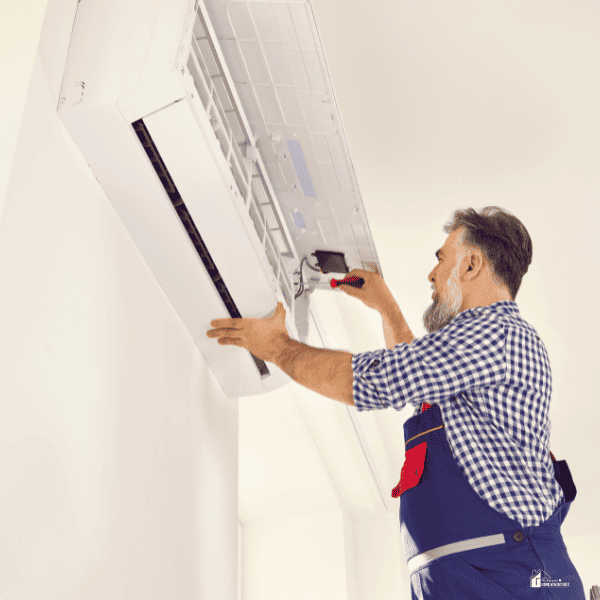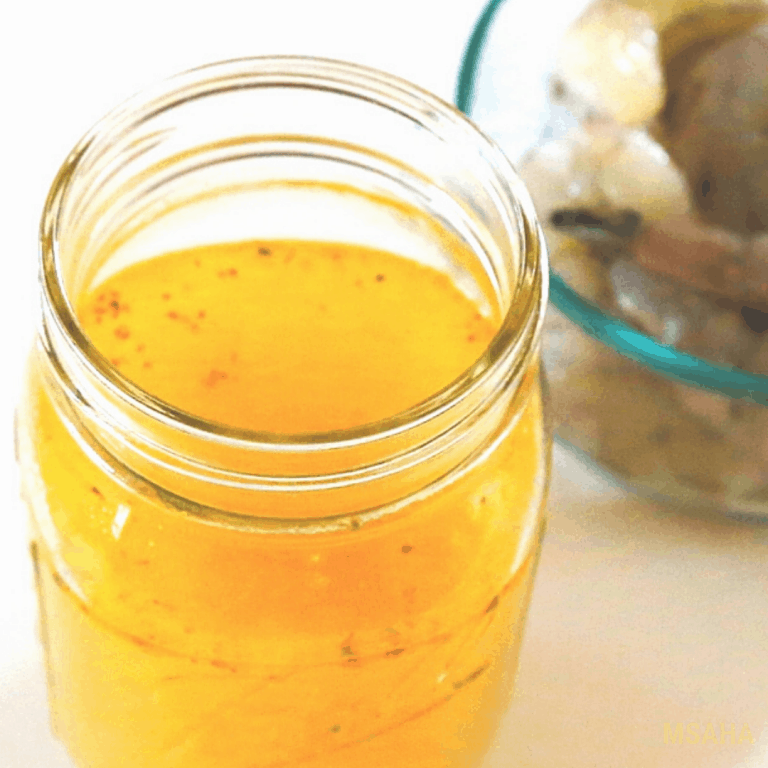Top 10 Eco-Friendly House Cleaning Tips
This post may contain affiliate links which might earn us money. Please read my Disclosure and Privacy policies hereToday, many people focus on sustainable living. Eco-friendly home cleaning is a simple way to make the planet healthier. Conventional cleaning products often contain toxic chemicals. These can pollute waterways, harm indoor air quality, and affect your family’s health.
Green cleaning is a safe and effective alternative. It lets you keep your home clean while protecting the environment. In this post, you’ll find 10 easy house cleaning tips for a more eco-friendly lifestyle.

1. Use Non-Toxic, Biodegradable Cleaning Products
The most important part of an eco-friendly cleaning routine is using biodegradable, non-toxic products that are safe for your home and the planet. Conventional cleaning products usually include artificial chemicals like ammonia, chlorine bleach, artificial fragrances, and other petrochemical derivatives.
Chemical cleaners are harmful to human health. They can cause allergies, asthma, and other respiratory problems. They also damage the environment through toxic runoff. This runoff contaminates waterways, kills aquatic life, and destroys ecosystems.
Green cleaning products are different. They use plant-based or mineral-derived ingredients. These substances break down quickly and safely in nature. This means they do not build up in soil or water. As a result, they reduce the environmental impact of household cleaning.
They limit toxic by-products and keep ground and surface water clean. They also improve indoor air quality. Unlike chemical cleaners, they do not release volatile organic compounds (VOCs).
The Importance of Non-Toxic, Biodegradable Products
Non-toxic and biodegradable cleaning products are not only important in terms of the environment. The synthetic cleaners can also contaminate the air quality in the home considerably as they emit VOCs. Substances like formaldehyde and benzene can cause headaches, dizziness, and long-term health effects, including cancer.
Using green products reduces indoor pollutants and makes the environment safer for children, elderly occupants, and those with allergies or asthma.
Harsh cleaners often irritate the skin and eyes. Non-toxic alternatives avoid these problems, making them safer to handle and lowering health risks for the whole family.
Non-Toxic, Biodegradable Cleaning Products Examples
Several well-known brands focus on eco-friendly cleaning products and hold certifications from organizations like Green Seal, EcoLogo, or Safer Choice by the EPA. The following are the common types and examples:
- All-Purpose Cleaners: The all-purpose cleaners, such as Method All-Purpose Cleaner or Seventh Generation All-Purpose Cleaner, contain plant-based surfactants and natural preservatives that clean surfaces without producing harmful fumes.
- Dishwashing Liquids: Ecover and Mrs. Meyer are brands that provide biodegradable liquid soaps that are skin-friendly, phosphate-free, and grease-cutting.
- Laundry Detergents: Enzyme-free and fragrance-free products such as Biokleen or Seventh Generation have the cleaning power without the enzymes and synthetic fragrances that increase aquatic toxicity.
- Bathroom Cleaners: Cleaning products such as Better Life Bathroom Cleaner take advantage of ingredients like citric acid and plant-based detergents to safely dissolve soap scum and mineral deposits.
- Glass and Window Cleaners: Branch Basics Glass & Surface Cleaner is made with simple plant-derived alcohols and organic essential oils and does not contain ammonia-based chemicals.
- Floor Cleaners: Green Works Floor Cleaner or Method Squirt + Mop Floor Cleaner are biodegradable cleaning products that clean with biodegradable surfactants and natural fragrances, without damaging hardwood, tile, and laminate floors.
- Air Fresheners and Deodorizers: Instead of applying synthetic fragrances, such as Puracy Natural Room Freshener, apply essential oils and baking soda to naturally remove odors.
Many of these products are recyclable or can be refilled, helping minimize plastic waste and support sustainable living.
2. The Power of Natural Ingredients to Clean
Nature offers powerful cleaning materials that are affordable, safe, and versatile. You can remove grease, stains, odors, mold, and bacteria using common staples like baking soda, distilled white vinegar, lemon juice, and hydrogen peroxide.
Baking soda works as a natural deodorizer and mild abrasive. It’s great for freshening carpets or cleaning counters. Vinegar’s acidity removes mineral deposits and grime, making it ideal for glass, tiles, and kitchen surfaces.
These ingredients can also be combined for stronger cleaning power. For example, baking soda and vinegar create a fizzy reaction that loosens dirt in toilets and drains. Lemon juice cleans while adding a fresh scent. Hydrogen peroxide is a gentler alternative to bleach, breaking down into water and oxygen.
Using natural ingredients gives you a flexible, eco-friendly cleaning routine without harsh chemicals.
Green Cleaning Product Ingredients Key Ingredients
Knowing which ingredients make up non-toxic, biodegradable cleaners helps you make informed choices and even create your own green solutions at home. The most widespread ecologically friendly elements are:
- Plant-Based Surfactants: Plant-based surfactants are made of coconut oil, corn, or palm oil (sustainably sourced) and are able to cut through grease and dirt and break down naturally.
- Citric Acid: Citric acid is a natural acid that is found in citrus fruits. It dissolves hard water stains and mineral deposits and can be particularly useful in kitchen and bathroom cleaners.
- Sodium Bicarbonate (Baking Soda): A mild abrasive and deodorant, this is very good at scrubbing surfaces and removing odors.
- Vinegar (Acetic Acid): This natural disinfectant can be used to remove mold, bacteria, and grime and is particularly useful when cleaning glass and tile.
- Essential Oils: e.g., tea tree, lavender, lemon, and eucalyptus oils, which are antimicrobial and naturally fragrant, free of synthetic chemicals.
- Hydrogen Peroxide: A non-toxic alternative to bleach that kills bacteria and viruses and decomposes to form oxygen and water without leaving toxic residues.
These are a mixture of safety and efficacy, and it shows that you do not have to use harsh chemicals to be clean.
The Way to Find Really Green Products
Do not let marketing words like natural, green, or eco-friendly mislead you when shopping, as they are unregulated and can be deceiving. Instead, seek:
- Certifications: Third-party labels such as Green Seal, EcoLogo, USDA Organic, or EPA Safer Choice show that a product has passed high environmental and health criteria.
- Ingredient Transparency: Brands ought to be transparent in their full ingredient disclosures without proprietary blends of fragrances that can conceal synthetic chemicals.
- pH Balance: Products that are neutral or slightly acidic in pH are safer to the skin and surfaces and have less impact on the environment.
- VOCs free: Ensure that products are free of volatile organic compounds, especially indoor sprays or aerosols.
3. Restrict Single-Use Goods and Plastics
The most convenient way to make a cleaning routine eco-friendly is to minimize waste, in particular, single-use plastic and disposable wipes. Most traditional cleaners are packaged in plastic bottles, which are a source of landfill and ocean pollution.
Rather, replace it with refillable containers, glass bottles, or bulk powders to reduce wasteful packaging.
Reusable cleaning cloths made of organic cotton, bamboo fibers, or microfiber are a great alternative to disposable wipes, as you can wash and reuse them hundreds of times. Using paper towels or recycled paper products also reduces environmental impact.
There are now refill stations in some towns where you can take your container and limit the amount of plastic you use. The shift to reusable cleaning materials will promote the circular economy and prevent plastic pollution.

4. Microfiber Cloths and Technology
Microfiber cleaning cloths and mops offer an eco-friendly way to attract dust, bacteria, and grime without using excessive cleaning products or water. Their fine fibers trap dirt at a microscopic level, reducing the need for frequent cleaning and harsh chemicals.
Microfiber products last a long time and can be reused hundreds of times before replacement. Adding microfiber technology to your cleaning routine helps save water, reduce chemicals, and make your work more environmentally friendly.
These benefits are why many eco-friendly cleaning companies recommend microfiber for maintaining clean, hygienic spaces with less environmental impact.
5. Use Steam Cleaning to Deep Sanitize, Including Carpets
Steam cleaning uses hot vapor to clean floors, carpets, upholstery, and kitchens without harsh chemical agents. The heat kills up to 99.9 percent of bacteria, mold spores, dust mites, and allergens.
This method is ideal for people with allergies, asthma, or chemical sensitivities, as it leaves no toxic residues or VOCs found in conventional cleaners. Steam cleaning removes odors at the source and deep cleans fabrics and carpet fibers using only heat and moisture.
It works especially well for carpets, as it avoids chemicals and soapy residues that can attract dirt and worsen indoor air quality. Unlike shampooing or traditional wet cleaning, steam cleaning keeps fibers free from detergent buildup, giving carpets a fresher look and extending their life.
It also removes ingrained dirt, oily soils, pet dander, and dust mites deep within the carpet pile—something conventional vacuuming often misses—creating a healthier indoor environment.
Professional carpet cleaning singapore services utilize state-of-the-art, eco-friendly steam technology that adheres to strict environmental standards. These operators use specially designed steam machines with high-efficiency filtration systems and precisely controlled moisture output to prevent over-wetting, which can cause mold growth.
They also use non-toxic, biodegradable cleaning solutions that break down naturally without harming aquatic life or soil ecosystems. This approach reduces the environmental footprint of cleaning while keeping indoor spaces safe for families, pets, and employees.
6. Save Water and Energy by Batching Your Cleaning
The efficiency of cleaning can be a way of saving important natural resources. Rather than several short cleaning sessions, combine your cleaning activities by room or surface to allow you to accomplish them effectively using the least amount of water and power.
As an example, one should dust all the rooms prior to mopping the floors, or clean all the surfaces in the kitchen at once.
The batch cleaning saves repetitive rinsing or appliance usage, which saves water and lowers energy usage to heat water or run vacuum cleaners. It is not much harder to be conscious of the timing and method of cleaning, which makes it more sustainable and shows that green habits are feasible and effective.
7. Do It Yourself Cleaning Solutions
Do-it-yourself cleaning recipes are becoming more and more popular due to their low price, the ability to customize them, and their environmental advantages. Making your own cleaners will allow you to skip the packaging waste and harmful chemicals and use natural, simple ingredients.
Common recipes are all-purpose cleaners consisting of vinegar, water, and essential oils; glass cleaners consisting of diluted vinegar and water; or scrubbing powders consisting of baking soda and salt. Your own cleaners may be safer around pets and children, and you can add your own scent with peppermint, lavender, or citrus oils.
This method will increase control over the exposure of your household to chemicals and build a stronger connection to eco-friendly living.
Tips on How to Use Cleaning Products
- Concentrates and Dilution: A lot of green products are available as concentrates, which you can then dilute at home to suit different tasks, saving shipping weight, packaging and cost.
- Multi-use Formulas: All-purpose cleaners will also help you to buy and stock fewer products, fewer bottles, and fewer ingredients.
- Supplement with Natural Tools: Replace synthetic waste by using microfiber cloths, reusable mop heads, and brushes with natural bristles to enhance cleaning efficiency.
- DIY Cleaners: Take advantage of the cheap ingredients listed above to create your own DIY cleaning solutions that you can customize according to your needs at home.

8. Dispose of Hazardous Cleaning Materials Properly
In changing to green cleaning products, dispose of any remaining conventional cleaners responsibly, rather than flushing them down the drains or throwing them in the trash. Water systems and soil may be polluted by chemical residues, which destroy aquatic life and ecosystems.
Look in the municipal guidelines to find out when hazardous waste is collected, or check at stores where you bought cleaning chemicals to see if they have a take-back program. You will be helping to save the environment by avoiding toxic runoff. With the passage of time, the quantity of hazardous waste at your home will decrease as you adopt natural and eco-friendly options.
9. Indoor Air Quality Indoors with Ventilation and Plant Power
VOCs emitted by synthetic cleaning products tend to worsen indoor air pollution. You can enhance the quality of air that your family will breathe by using natural cleaners and opening the rooms to ventilate them during and after cleaning.
Houseplants are also a good idea to increase and clean the air of toxins and improve humidity. Such plants as spider plants, peace lilies, and ferns consume pollutants and generate oxygen. A green cleaning routine is not only about surfaces; it encourages a healthy living environment in general.
10. Preventive Cleaning and Routine Maintenance
Preventive habits that minimize the necessity of deep cleaning are one of the sustainable cleaning practices. Cleaning up spills as soon as they happen, placing doormats to trap dirt, and keeping up will avoid the accumulation and subsequent rough scrubbing or application of chemicals.
Light cleaning regularly will keep your home in a better state longer and reduce the overall amount of water and products used. This plan is economical, time-saving, and resource-saving to the environment.
Health and Environmental Stewardship Benefits
By switching to non-toxic, biodegradable cleaners, your household's ecological footprint is dramatically reduced through:
- Minimizing toxic runoff that destroys rivers, lakes, and oceans.
- Reducing the accumulation of recalcitrant chemicals in the environment and groundwater.
- Promoting biodiversity by not killing useful microorganisms.
- Saving resources through safer packaging and refill schemes.
To your family, this translates to breathing cleaner air, not having skin and eye irritation, and reducing the risk of cancer that may result from long-term exposure to harsh chemicals. The environmentally aware consumers are also contributing to the innovation and competition between manufacturers, which stimulates an increased number of manufacturers to adopt sustainable practices on a larger scale.
Conclusion
Green cleaning is possible, effective, and important for a healthier home and planet. You can keep your space sparkling clean by choosing biodegradable products and natural ingredients like baking soda and vinegar. Reduce plastic waste and try modern methods such as steam cleaning carpets and upholstery for a sustainable shine.
Safe disposal practices and improving indoor air quality through ventilation and plants also boost well-being. Whether you clean yourself or hire a professional eco-friendly service, such as carpet cleaning companies in Singapore that use green steam technology, your choices make a difference.
These small changes preserve ecosystems, reduce pollution, and create a safer home for your family. Start small or make big changes. Either way, green cleaning rewards you with a cleaner home, a healthier planet, and peace of mind.








